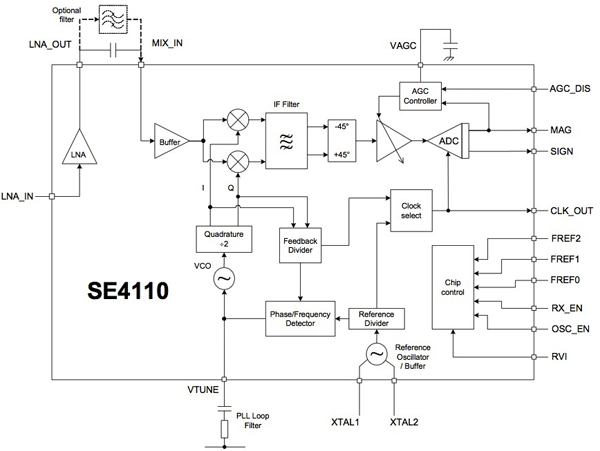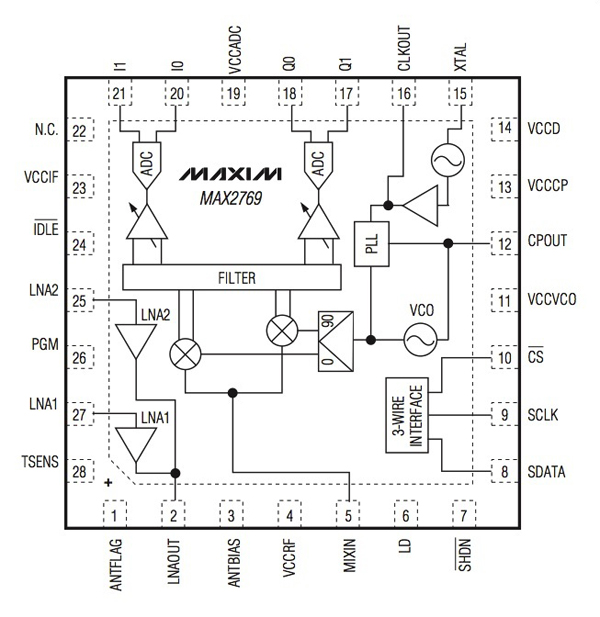Power-saving Features in GPS ICs, Modules Extend Battery Life in Mobile Apps
資料提供者:Electronic Products
2012-11-01
GPS functionality has emerged as an essential requirement for personal mobile devices. For engineers, the need to ensure extended battery life can conflict with application requirements calling for continuous GPS location fixes. By employing power conservation strategies, engineers can add sophisticated GPS capability to mobile devices. As the basis for this approach, engineers can use a variety of low-power operating modes available in GPS ICs from Skyworks and Maxim Integrated Products and GPS modules from Antenova, Linx Technologies, LM Technologies, Taiyo Yuden, and Telit.
In personal mobile appliances such as cellphones, GPS operations can consume as much power as the display. Consequently, efficient power management of GPS circuitry can have a significant impact on battery life of the system as a whole. Although application requirements will largely drive the effective limits for GPS power conservation, engineers can expect to exercise considerable control over power consumption during the initial GPS fix and during GPS quiet states.
In order to establish an initial GPS fix, GPS devices require almanac data, ephemeris data, and satellite fixes. Ephemeris data provides the current date and time as well as satellite health data and typically can be acquired in 30 to 120 sec. Almanac data provides information on satellite location throughout the day and is the most costly to update in standalone GPS systems, requiring several minutes to download at the 50 bps rate available for satellite downloads. Assisted GPS, or A-GPS, methods can use local wireless connectivity to access the Internet to download almanac data orders of magnitude faster than direct satellite downloads.
Along with almanac and ephemeris data, the GPS device requires signal locks with typically at least four satellites to calculate its latitude, longitude, altitude, and time. The time required to provide the initial set of these results is called Time to First Fix (TTFF) and is typically the focus of power conservation efforts in GPS design.
Specifications for TTFF are typically provided in three contexts:
- Cold start - the GPS receiver has no valid ephemeris or almanac data, forcing an extended delay for data acquisition
- Warm start - the receiver does not have valid ephemeris data, but has valid almanac data and its most recently stored positional information is still valid - resulting typically a 30 sec delay for data acquisition
- Hot start - the receiver has valid ephemeris and almanac data and a valid recent positional fix information, typically resulting in a delay of one second to attain a fix
To a large extent, the key challenge in GPS power management is employing strategies to reduce GPS power consumption during cold and warm starts, in particular. At the same time, maximizing GPS radio receiver performance is essential for ensuring the fastest possible signal acquisition at all phases of the location fix process. For example, engineers need to optimize antenna performance. Low antenna gain will erode receiver sensitivity, likely extending TTFF at any operating mode. Furthermore, a clean power source is required to help minimize noise sources that can contribute to the overall noise figure in the receiver signal chain. A noisy power source will increase the noise figure and thus degrade receiver sensitivity.
Along with these engineering practices, however, GPS devices themselves offer various features that can help designers minimize power consumption in power-sensitive localization applications. For example, the Skyworks SE4110L GPS IC (Figure 1) offers three levels of power control – standby, oscillator only, and active. In active mode, the device consumes only 10 mA, which can be further reduced 0.4 mA by using an external oscillator rather than the IC's internal crystal oscillator to provide the reference frequency. For some applications, engineers may also elect to disable the internal LNA, which saves an additional 1.9 mA or so. In oscillator-only mode, the device consumes 1 mA, and standby mode requires only 3 µA (typ) or 10 µA (max). The Skyworks SE4150L GPS IC consumes 15 mA in active mode and features a standby current specification of 10 µA. Engineers can also disable the internal LNA on this device for a savings of 5 mA.

Figure 1: GPS ICs such as the Skyworks SD4110L offer power control modes that allow engineers to reduce power significantly depending on application requirements. (Courtesy of Skyworks)
For its MAX2769 GPS IC (Figure 2), Maxim Integrated Products provides an incremental power management capability, where engineers can balance performance with power consumption by selectively programming the bias current of individual on-chip blocks to their minimum recommended values. A convenience power saving mode sets the LNA, mixer, LO, and VCU currents to their minimum values.

Figure 2: The Maxim MAX2769 GPS IC allows engineers to selectively reduce power consumption in individual on-chip subsystems. Reducing power when application requirements allow reduces functionality in the affected subsystem. (Courtesy of Maxim Integrated Products)
Other settings in the MAX2769 IC switch the PLL from its fractional-N mode to a power-savings integer-N mode and reconfigure the baseband filter from low-pass 3rd-order Butterworth filter to a complex bandpass 5th-order Butterworth filter. Although this low-power mode reduces current consumption to 10 mA, it also causes the cascaded noise figure to increase to 3.8 dB. Power consumption in typical active mode depends on configuration: The device includes two LNAs that are enabled separately with and without an active antenna. Without an antenna where LNA1 is active, the IC consumes 18 mA but offers a noise figure of 1.4 dB. With an antenna where LNA2 is active, power consumption drops to 15 mA but noise figure rises to 2.7 dB.
Engineers can also choose from a variety of available GPS modules that are able to implement even more sophisticated systems-level power conservation modes. For example, the Telit Jupiter F2 provides a low-power tracking mode that consumes only 10 mA. Telit includes additional power-savings features in its Jupiter series of modules. For example, Jupiter modules feature a TricklePower mode that reduces power by adapting to sGPS signal strength, switching to full power in weak signal areas and low power in locations with strong GPS signals. In this mode, the Telit's Jupiter 32xLP module achieves a power savings of 50 percent while operating with 1 sec update. The 32xLP module also provides a Push-To-Fix mode, which keeps the GPS system in sleep mode until activated by a wakeup signal. At the same time, the device is able to automatically wake up and refresh ephemeris data to ensure a short TTFF when the wakeup signal re-enables active mode.
Engineers can find a variety of power-saving modes available in other available GPS modules such as the Antenova Radionova GPS modules, Taiyo Yuden GYSFFMAXX GPS module, Linx Technologies SR and SG GPS modules, and LM Technologies LM477 and LM478 GPS modules. Largely intended for more demanding GPS applications, these modules typically provide even more sophisticated capabilities at the cost of greater power requirements. Nevertheless, engineers can find a range of power-saving modes in each module in this class.
Summary
As demand grows for localization features in mobile appliances, engineers face challenges in accommodating required GPS update requirements with the need to extend battery life in these devices. In fact, GPS circuitry can consume as much energy as display subsystems in mobile applications, particularly when continuous position updates are required. To address these challenges, engineers can combine systems-based power conservation methods with hardware-based power management features available in GPS ICs and modules. By opting for low-power modes available in these ICs and modules, designers can deliver sophisticated GPS functionality with the lowest possible impact on battery life.
聲明:各作者及/或論壇參與者於本網站所發表之意見、理念和觀點,概不反映 DigiKey 的意見、理念和觀點,亦非 DigiKey 的正式原則。







